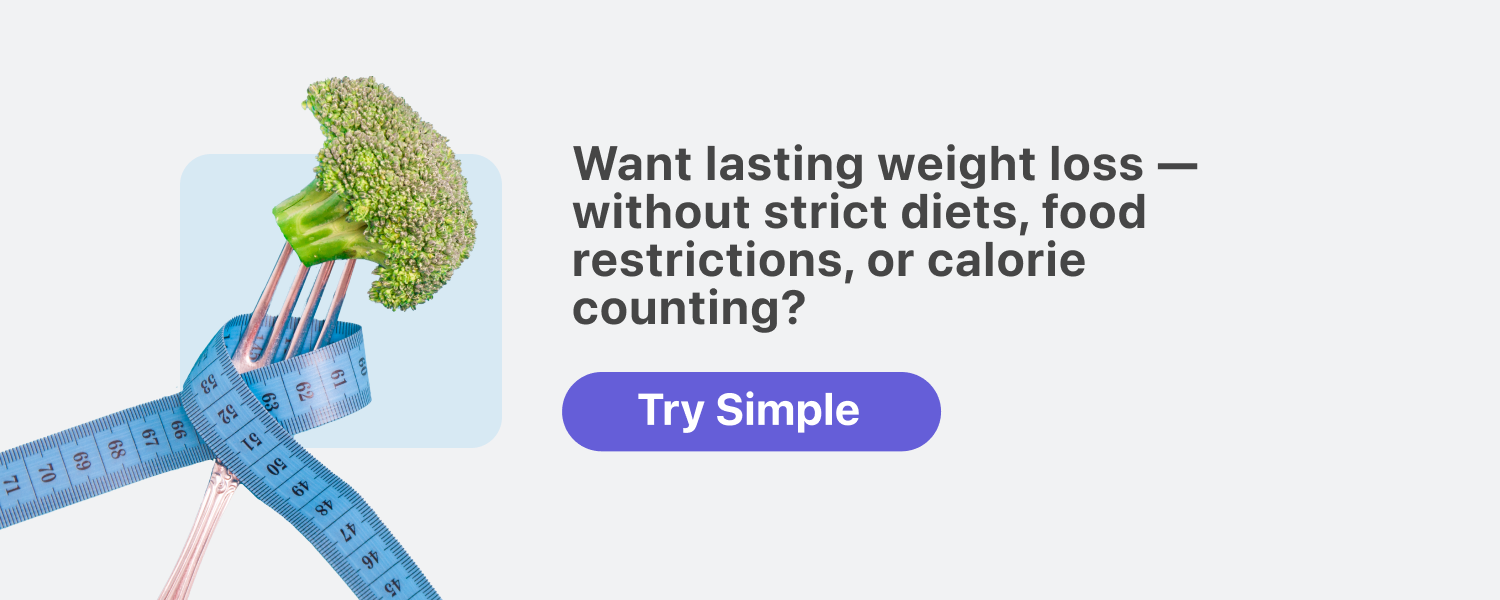The complete guide to 18:6 intermittent fasting

Intermittent fasting regularly shows up as many health-seekers’ go-to eating plan, and for good reason.

Research suggests that it could have a profound effect on our bodies, reducing body fat, unwanted body weight, insulin resistance, high blood pressure, high cholesterol, … the list goes on.
One of the most popular kids on the block is 18:6 intermittent fasting.
One step up from 16:8, could those extra couple hours of fasting time increase the result-generating power of this nutritional approach?
Maybe so!
If you’re going to get down and dirty with 18:6, you need to know what you’re letting yourself in for.
Here’s everything you need to know.
What is the 18:6 intermittent fasting method?
The 18:6 intermittent fasting method is a type of time-restricted eating (TRE). It’s like the older, more badass sibling of 12:12, 14:10, and 16:8.
As its name suggests, on 18:6 intermittent fasting, you’d fast for 18 hours a day, leaving you six hours for all your eating. That’s 18 hours when what you can consume is limited to these “while-fasting” drinks. (Water’s gonna be your new best friend, we can feel it.)
And six hours to make sure all your nutritional needs are covered. It’s not for the inexperienced faster, that’s for sure.
Other TRE schedules involve shorter fasting windows and longer eating windows. So, if you are a rookie in the intermittent fasting realm, jump off this 18:6 train here and check out our intermittent fasting for beginners guide instead.
Then — because support is crucial when you’re new to a thing — take our Simple quiz and join our fasting community so we can be part of your cheer squad. (We promise to leave our pom-poms at the door.)

How does 18:6 intermittent fasting work?
How to start 18:6 intermittent fasting — like any TRE routine — involves some soul-searching. You want to know why you’re fasting in the first place. Beyond your general health and well-being, that goal will be the wind beneath the wings of your fasting journey.
You also want to consult your healthcare provider before actually making the jump. They need to clear you for takeoff first and set you up for a safe flight.
OK, now that the necessary groundwork is in place, nuts and bolts time — here’s how 18:6 intermittent fasting works in practice.
Step 1: Choose your eating window
When do you want to be able to get your nosh on?
Think about when you need energy for work or workouts. When you eat with your family or friends. When you hit the sack and when you get up to face the day.
Which 6-hour time slot would jive best with your lifestyle?
Step 2: Write yourself a meal plan
You can, of COURSE, fly by the seat of your pants here and leave your food choices in the hands of fate.
But, if you learn how to write an epic intermittent fasting meal plan (hit up that link for some help), you will go from “doin’ OK” to “killing it!” For 18:6 fasting to work for you, get your eating window working as beautifully as your fasting window.
There’s no point smashing your fast like a pro and then either:
- eating a ton of low-nutrient, health-depleting foods; or
- eating very little because diet-industry conditioning says, “the less you eat, the better.” (We know just how hard this mindset is to break. Hang in there.)
Step 3: Let your metabolism do its thing
When you’re both completing your fasts and nailing your nutrition, stuff will start to happen internally.
You’ll naturally take in fewer calories on an 18:6 intermittent fasting schedule. (Most people report being able to fit in around two meals and a snack.) With that:
- Your blood sugar levels will naturally drop.
- Your body will produce ketones for energy.
- Your hormones, like insulin and leptin, will adjust.
We’ll get into the details later, but all of this means that your energy can go up, your thinking may become clearer, your appetite gets easier to manage, and you feel good.
What to eat on an 18:6 intermittent fasting diet meal plan

When you’re considering what to eat during intermittent fasting, you’ve got a pretty wide pool of foods to choose from.
To thrive on 18:6 intermittent fasting, you need a meal plan that makes room for all these rockstars of excellent nutrition:
- lean proteins such as chicken, fish, tofu, and legumes
- non-starchy vegetables such as leafy greens, broccoli, cauliflower, and peppers
- fruits such as berries, apples, and citrus fruits
- whole grains such as quinoa, brown rice, and oats
- healthy fats such as avocado, nuts, seeds, and olive oil
- calcium-rich foods such as cheese, calcium-fortified plant milk, and full-fat yogurt
These foods do so many things well. Such as:
- help us feel satisfied
- keep cravings in check
- provide ample energy
- give us tons of nutrients
The upshot of all that is that fasting is easier, our bodies and minds feel good and work well, and we can kick butt on all the things we do in a day.
18:6 intermittent fasting and weight loss
As we said before, you’ll naturally take in fewer calories on an 18:6 intermittent fasting schedule. That’s one way that fasting triggers weight loss.
It’s way harder to eat more than your body needs when you’re limited to a 6-hour window, so you eat less than you burn, and boom, the number on the scale gets smaller.
Our science team can attest to the truth of this. They report that — based on the evidence they see both in the science AND with our Simple app users — shorter eating windows (4–6 hrs) produce faster weight loss than longer ones (8–10 hrs) due to greater caloric deficits.
For those who like to geek out on this stuff — in general:
- 4–6 hour TRE reduces energy intake by ~500 kcal/d
- 8-hour TRE reduces energy intake by 300–400 kcal/d
- 10-hour TRE reduces energy intake by 0–200 kcal/d.
The other mechanism that drives weight loss here is how, during the fasting period, the body switches to ketosis. This is when you burn stored fat for energy, as there’s no glucose coming in (because you’re not eating), and this is the metabolic shift associated with intermittent fasting.
When this shift happens varies from person to person, so doing a longer fast makes it more likely you’ll get squarely into the ketosis zone. This means that with 18:6 intermittent fasting, the potential for weight loss may again be higher than with 16:8, 14:10, or 12:12.
18:6 Intermittent fasting diet results
“I thought that I might lose 10–15 lbs, and ended up losing 50 lbs.”
Brett had always been active — hiking, trail running, rock climbing — but his weight was stuck at 215–220 pounds regardless. So, he decided to give intermittent fasting a try upon a friend’s recommendation.
Brett has followed the 18:6 intermittent fasting schedule, along with doing muscle mass, strength, and endurance workouts, for over a year now, and he’s down 50 pounds.
“I thought that it’d be a season, but I now see it as a lifestyle.”
Health benefits of 18:6 intermittent fasting
18:6 intermittent fasting has a bunch of associated (and well-researched) health benefits.[1] Let’s take a closer look.
Improved insulin sensitivity
Intermittent fasting has been shown to improve insulin sensitivity, which can help lower blood sugar levels and reduce the risk of type 2 diabetes.[2]
Reduced inflammation
Studies have found that intermittent fasting may help reduce inflammation in the body, which lowers the risk of several chronic diseases.[3]
Lower risk of health conditions
Intermittent fasting may help lower blood pressure, cholesterol levels, and triglycerides, which can improve health conditions like obesity, metabolic syndrome, and cardiovascular disease.[4,5]
Brain protection
Some research suggests that intermittent fasting may have neuroprotective effects, which could potentially reduce the risk of neurodegenerative diseases like Alzheimer’s and Parkinson’s.[6]
Health risks of 18:6 intermittent fasting
Of course, there are some risks to be aware of, too.[7]
Nutrient deficiencies
With such a short eating window, you risk not getting enough essential nutrients if your diet is not well-balanced and thought through. It’ll take effort to make sure your body gets everything it needs.
Disordered eating
Intermittent fasting, especially with a schedule that restricts eating as much as 18:6 does, can change our relationship with food in a less positive way.[8] Habits like over-restricting, binging, or obsessing about food may gain traction.
Dehydration
If you’re eating less, you’re also getting less water, as our food makes up a significant amount of our water intake each day. That can lead to dehydration unless you’re dogged about drinking lots of water when fasting.
Side effects
Some people may experience feeling tired, weak, grumpy, more distractible, hungry, and headachy — especially when they first start.
These should pass as your body adapts.

Is 18:6 intermittent fasting safe?
For most people, 18:6 intermittent fasting is considered to be safe.
However, it’s not suitable for everyone, particularly those who:
- have (or are at risk of having) an eating disorder or have a history of one
- are extremely active
- have a body mass index (BMI) <18.5
- are under 18 or 80 years or more
- have a medical condition
- take prescription medications
- are pregnant, breastfeeding, or trying to conceive
If you see yourself represented in this list, give intermittent fasting a pass unless you’ve talked to your doctor, and they are 100% on board with your plans.
How can I minimize the risks of 18:6 intermittent fasting?
No one likes a party with a bunch of disruptive, uninvited guests. To minimize the chances of encountering any unruly side effects during your fasting experience — or stop them in their tracks if they try to score an invite — there are a few strategies you can put into place.
- Prioritize nutrient-dense, health-promoting foods like fruits, veggies, lean proteins, whole grains, and healthy fats during your eating windows.
- Have a water bottle handy at all times. Not a fan of the plain stuff? Jazz it up with slices of fruit or some fresh herbs. (If you need an extra reminder to drink up, try setting a hydration alarm on your phone!)
- Check in with yourself regularly. It’s natural to experience some initial side effects, but if they persist or something just doesn’t feel right, reach out to your primary care provider.
Another important element of minimizing fasting risks is to recognize signs that it may be time to stop fasting. Some intermittent fasting schedules may be safe to do daily, but we don’t recommend fasting endlessly, especially when following a stricter schedule like 18:6. Beyond severe, persistent, or additional side effects, if you notice:
- your results are plateauing
- you’re experiencing heightened hunger or emotion
- or your motivation, energy, and/or concentration feels low
it may be time to switch up your eating routine. Remember to speak with your doctor or registered dietitian before actually making any changes.
Pros and cons of the 18:6 intermittent fasting method
| Pros | Cons |
| Less meal prep (potentially) | More meal prep (potentially) |
| You choose when / what you eat | Hunger and cravings may increase |
| Good for weight loss | Might not fit your life |
| Could improve metabolic health | May be difficult to sustain |
Pros
Thanks to the short eating window, intermittent fasting on an 18:6 schedule means fewer meals and, therefore, less time spent prepping food, which is a huge win. Who doesn’t love not having to chop and cook and wash up as often??
Your meal timing and what you eat are completely in your control, and if you choose health-promoting, nutrient-rich foods more often than not, your weight and health may change in ways you really like.
Cons
In order to get plentiful health-promoting foods into your 6-hour eating window, you may need to take up meal prepping in a much bigger way than you’re used to.
Hunger and cravings will likely be a slog at times, and this eating pattern may not sync with how your family and friends eat. It’s possible you may have to embrace the Tupperware Life, turn down social food occasions, or have meal times separate from those you love.
For any results you see to stick, you need to be able to fast like this for the long haul. Is it sustainable for you?
Is 18:6 intermittent fasting right for you?
An 18:6 intermittent fasting schedule could be perfect for you if you’re already kicking butt on 16:8 and you’re hungry for more results.
But if you’ve not yet mastered the 16-hour fast, don’t hit 18:6 just yet. Start lower down the TRE scale with 12:12 or 14:10. These are great entry-level options for intermittent fasting.
Then, if you feel the intermittent fasting life is a good fit for you, work your way up to 18:6 to see what results it could offer.
You can practice any TRE method of intermittent fasting, including 16:8, 14:10, or 12:12, with our help and support. Take our Simple quiz, and we’ll be in your corner pronto.
As for other fasting schedules, like longer TRE schedules (e.g., 20:4 intermittent fasting) as well as the 5:2 diet, alternate-day fasting, water fasting, Eat Stop Eat, and dry fasting, we’re not into them here at Simple.
From a health and well-being POV, they’re not great at helping you be your best self. They don’t adequately respect or support our bodies’ needs (you know, little things, like drinking enough water and eating enough food), and we don’t consider them to be safe.
Our suggestion is to give those schedules a pass and stay on solid ground with a TRE schedule with less than 18 hours of fasting. It’s well researched, far more customizable, and you can get all the results you’re looking for without compromising your health.
If you do want to give these other schedules a go, getting the green light from your healthcare team first is extra important.
5 tips for getting started with 18:6 intermittent fasting

1. Make sure your fasts are already strong
Before you try 18:6 fasting, be secure in your ability to fast for shorter periods. You can’t go from 0 to 18 in one easy breezy jump. You gotta have some fasting reps in the tank.
So be real with yourself and make sure your 16-hour (or however long) fasts are working well before you stretch to 18.
2. Drink more
The dehydration we talked about earlier? Yeah, that could still be an issue, even if you’re an experienced intermittent faster.
18:6 means you’re probably going to cut your calories, so increase your water intake to handle the water that’ll disappear with the food you’re now not eating.
3. Sharpen your meal planning
To do 18:6 intermittent fasting and see positive results, what you eat is hugely important.
So, revisit your meal plan and adjust it for the shortened eating window. Be sure to pack in the nutrient-dense, energy-providing foods you need.
Then, revisit your meal planning practice and tighten up any areas that may have been slipping.
4. Watch your thoughts
Adding extra hours to your fast could cause feelings of restriction to nudge up.
Check in with yourself on how you’re thinking about eating less and fasting longer.
If you notice thoughts like, “Ugh, I’m even more restricted!” or “Shoot, I can’t eat that / then,” see what happens if you try a word swap.
Instead of focusing on the restriction — which can increase feelings of resentment and make intermittent fasting harder to stick to — try using the language of choice.
“I’m choosing to lengthen my fast.”
“I’m choosing not to eat right now.”
Language matters, and these two statements of choice place the power back with you. You’re doing fasting; it’s not doing you.
5. Listen to your body
There’s no guarantee that 18:6 will be right for your body. Notice how it responds.
If you feel awesome, hunger is easy enough to manage, and your brain is happy — it’s all good.
If you feel wrecked, consistently sluggish, and like someone stole your smarts, 18:6 isn’t your best bet.
Frequently asked questions about 18:6 intermittent fasting
When figuring out what you should eat after 18:6 intermittent fasting, follow the principles of high-quality nutrition for best results.
Choose a lean protein or a whole grain, squeeze in some calcium-rich foods plus a veggie or two, and mix it up in a way you enjoy.
Not only can you drink water during 18:6 intermittent fasting, but you gotta!!

- Song DK, Kim YW. Beneficial effects of intermittent fasting: a narrative review. J Yeungnam Med Sci. 2023 Jan;40(1):4–11.
- Barnosky AR, Hoddy KK, Unterman TG, Varady KA. Intermittent fasting vs daily calorie restriction for type 2 diabetes prevention: a review of human findings. Transl Res. 2014 Oct;164(4):302–11.
- Moro T, Tinsley G, Bianco A, Marcolin G, Pacelli QF, Battaglia G, et al. Effects of eight weeks of time-restricted feeding (16:8) on basal metabolism, maximal strength, body composition, inflammation, and cardiovascular risk factors in resistance-trained males. J Transl Med. 2016 Oct 13;14(1):290.
- Yang F, Liu C, Liu X, Pan X, Li X, Tian L, et al. Effect of Epidemic Intermittent Fasting on Cardiometabolic Risk Factors: A Systematic Review and Meta-Analysis of Randomized Controlled Trials. Front Nutr. 2021 Oct 18;8:669325.
- Kroeger CM, Klempel MC, Bhutani S, Trepanowski JF, Tangney CC, Varady KA. Improvement in coronary heart disease risk factors during an intermittent fasting/calorie restriction regimen: Relationship to adipokine modulations. Nutr Metab . 2012 Oct 31;9(1):98.
- Gudden J, Arias Vasquez A, Bloemendaal M. The Effects of Intermittent Fasting on Brain and Cognitive Function. Nutrients [Internet]. 2021 Sep 10;13(9).
- Shalabi H, Hassan AS 4th, Al-Zahrani FA, Alarbeidi AH, Mesawa M, Rizk H, et al. Intermittent Fasting: Benefits, Side Effects, Quality of Life, and Knowledge of the Saudi Population. Cureus. 2023 Feb;15(2):e34722.
- Ganson KT, Cuccolo K, Hallward L, Nagata JM. Intermittent fasting: Describing engagement and associations with eating disorder behaviors and psychopathology among Canadian adolescents and young adults. Eat Behav. 2022 Dec;47:101681.
